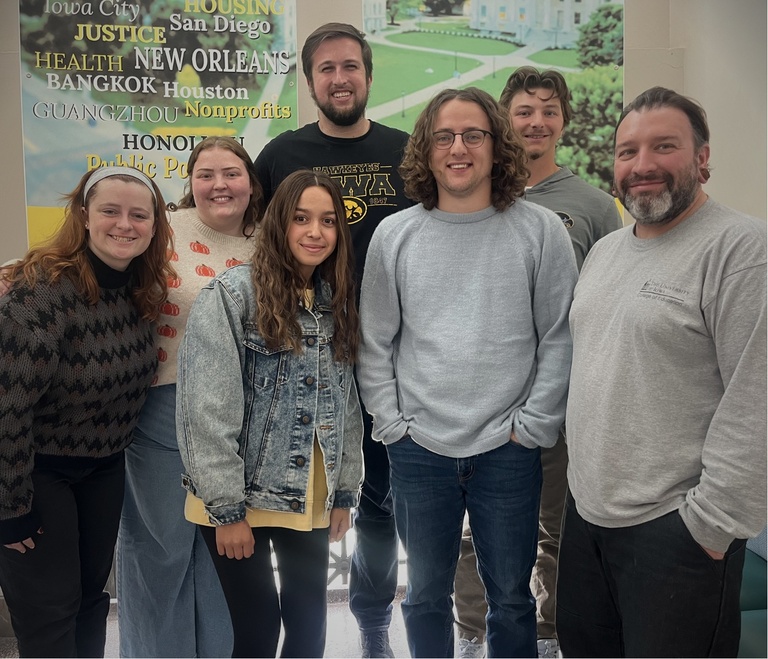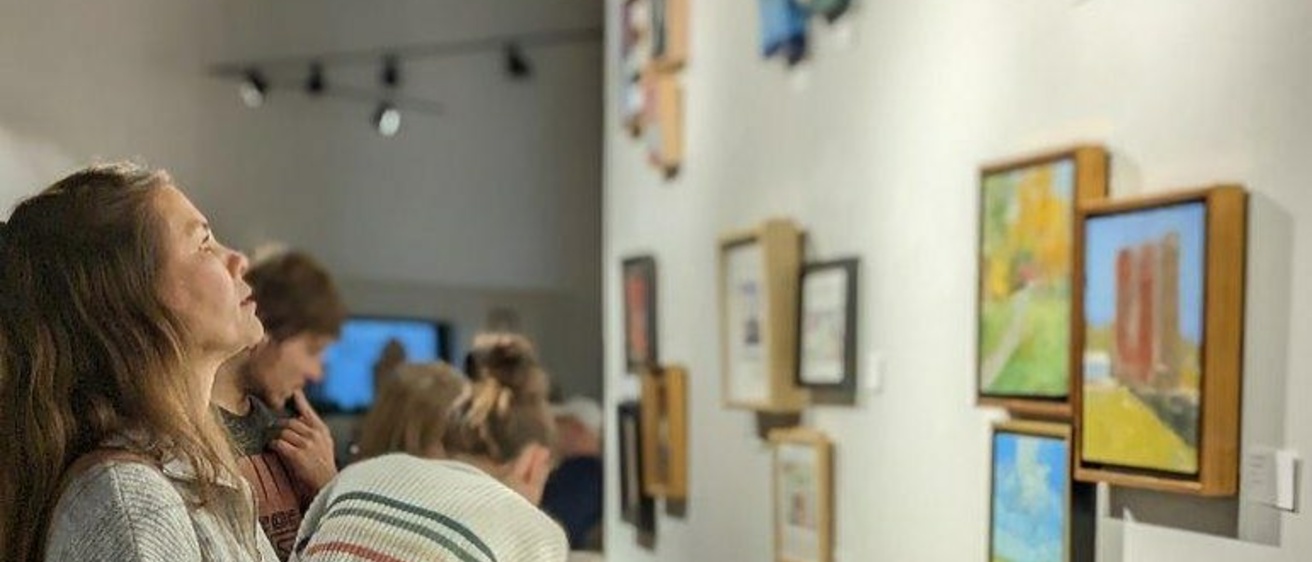“The truth is that politics, whose currency is power, and economics, whose currency is money, only get us so far. We also need culture, whose currency is trust.” - Yo-Yo Ma
Along with land use, housing, and transportation planning, many cities are adopting arts and culture plans. Echoing this sentiment from the great violinist Yo-Yo Ma, they recognize the power of arts and culture to bring people together and provide a sense of shared belonging. Evidence shows that communities with vibrant opportunities to experience the arts and co-create culture often attract new residents and retain existing ones, see decrease in crimes and increase in health and well-being.

This year, a group of University of Iowa students in the School of Planning and Public Affairs is undertaking is creating the first ever arts and culture master plan for the cities of West Burlington and Burlington. Through these communities’ yearlong partnership with the UI’s Initiative for Sustainable Communities (IISC), the group is assessing existing strengths, talking with residents about their visions, and researching planning models and best practices.
Prioritizing arts and culture
Elizabeth Pappas, one of the IISC team’s primary partners, says she has seen a “surge in arts and culture activity” in the area since becoming executive director of Art Center of Burlington in 2022. Believing that growing a good thing is crucial, Pappas appreciates the process the students are undertaking.
“A structured approach ensures that arts and culture remain a priority in city planning, securing funding and partnerships for continued growth,” she says. “We know that a vibrant arts scene contributes to community well-being by offering entertainment, creative expression, and opportunities for social connection.”
This sector, too often overlooked and underfunded, extends beyond museums and performance venues to restaurants and farmer’s markets, libraries, and heritage sites. It provides support for and amplifies creative workers. It aids with memory for an area’s history in forms such as storytelling, architectural preservation, and community archiving.
Two Cities, One Community
Seven graduate students are working on the project, five from the Urban Planning—Benjamin DeTaeye, Alexi Edmonds, Joe Grabowski, Ryan Harrington, Emma Knobloch, and—and two from Sustainable Development—Veyda Matos and Gabe Sturdevant. The guiding mantra they’ve adopted is Two Cities, One Community, which highlights the unique opportunities of bringing together two municipalities that have not always collaborated.
“We want to leverage the strengths of both cities,” says team member Ryan Harrington, “to create a cohesive, dynamic community that values and seeks to elevate its cultural identity.”
Since the inception of the project last fall, the team has engaged with community members to learn what arts and culture features they already enjoy and what additions or changes they suggest. They’ve conducted stakeholder interviews with leaders such as Pappas. Currently, they are completing case study research and a cultural asset map.
Emma Knobloch, another team member, hopes the completed plan and the evidence they’ve compiled will assist city leaders and local arts administrators make a strong case for arts and cultural funding. “West Burlington and Burlington are trying to figure out how to retain their younger residents. There’s strong evidence that arts and culture are drivers in helping people want to stay in a place.”
The plan's driving principles
Land use is another aspect of the plan. As needs are identified for programming, services, and new facilities, the planning team is identifying appropriate spaces. Harrington says they are currently mapping vacant lots and reviewing zoning for these parcels. As one of the driving principles of the plan is to ensure all members of the community can interact with the arts, they’re also figuring out which areas currently have less access to creative outlets.
Other principles include integrating the area’s history, committing to economic and environmental sustainability, and encouraging collaboration. The latter is where the “two cities, one community” philosophy comes in. The team see ample opportunities for cross-community arts and culture events, initiatives, and artist-led groups. They cite local public schools, Southeastern Community College, Art Center of Burlington, Southeast Iowa Regional Medical Center, and the Snake Alley Art Fair as potential collaborators.
As a group of seven, collaboration has been central to the team’s process. Harrington, who is interested in applying his planning degree to community development, says that at the onset of the project, each member shared why they were attracted to the project.
“We all had something that brought us to it,” he recalls, many of which they didn’t know about each other. For example, one member has a sister who is a musician living outside of Iowa partly because there isn’t sufficient work for her here, while others brought backgrounds in cultural studies.
Knobloch, who hopes to pursue a PhD in public health, is excited by the connection between health and the arts. She is also motivated by the way the arts can transcend differences. “At this divisive time, arts and culture help bring people together.”
Plan unveiled on May 8
Pappas is excited to share their final plan with her community. “I have been so impressed with all of them and their thoughtful, thorough approach,” she says. “They have been very hands-on and have truly done their research on our community and its rich history—so much so that I think I learned a thing or two I didn’t know through their findings and insights.”
The team will present their findings and recommendations during IISC’s end-of-year showcase event on May 8 in Burlington. Related projects from the partnership are an alleyway activation project led by UI art faculty member Ali Hval and a creative expression workshop taught by MFA student Mariana Tejeda.
